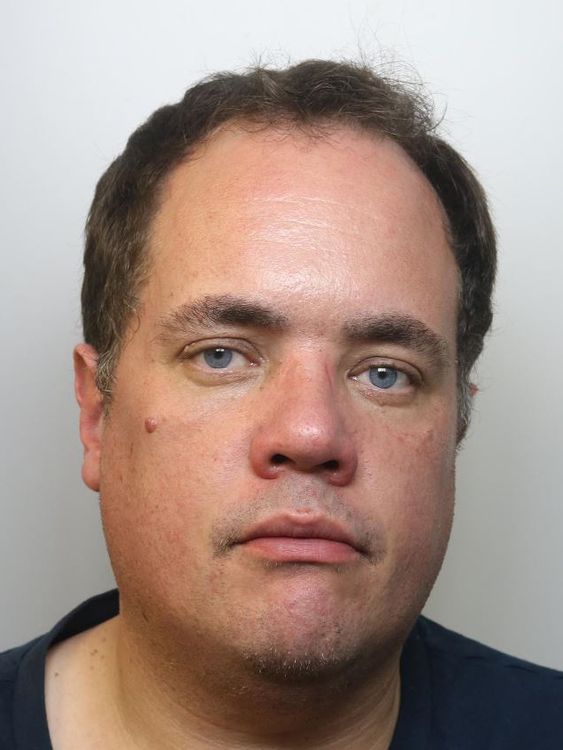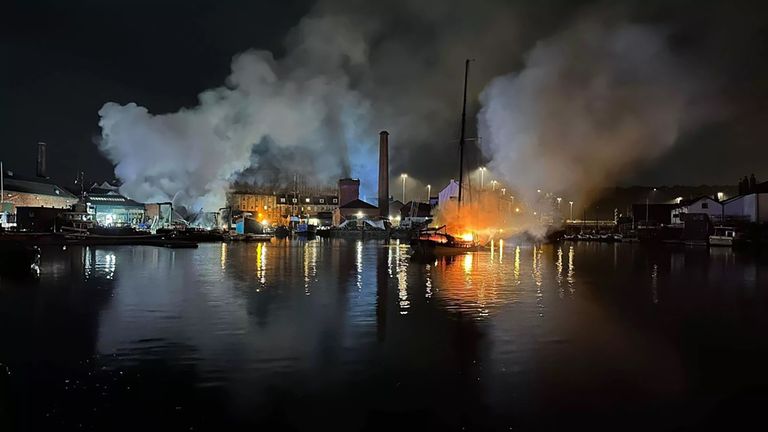‘Clearly dangerous’ arsonist behind £2.6m Bristol shipyard fire sentenced to life in prison | UK News
A serial arsonist will spend the rest of his life in prison after starting a fire which destroyed a historic shipyard.
Robert Boyd-Stevenson, 46, was working at the Underfall Yard in Bristol for only three days as a maintenance co-ordinator when he lit the blaze.
Bristol Crown Court heard that the fire was started in the Big Shed shortly before midnight on 6 May, and within minutes was well alight.
The fire was so severe it destroyed the Big Shed as well as boats moored nearby. It also forced dozens of residents to evacuate from their homes.
Judge Martin Picton handed down a life sentence with a minimum term of six-years imprisonment after concluding Boyd-Stevenson posed a risk to the public from further offending.
“It appears when things in your life are going wrong you react by starting fires or making bomb hoaxes,” the judge said.
“It has happened with significant frequency to give rise to the concern you are highly likely to do so again – you are clearly dangerous.”
At a previous hearing, the defendant, of Headford Road, Knowle, Bristol, admitted arson being reckless as to whether life is endangered.
The court heard that Boyd-Stevenson has previous convictions for arson and bomb hoaxes dating back to 1997 and served an 11-year sentence for similar crimes.
Rebuilding the shipyard has been estimated to cost £2.6m and could take three years to complete, with £200,000 lost in revenue in the meantime.
Some businesses that used the yard have been forced to cease trading, and others have faced bills of up to tens of thousands of pounds.
Gregory Gordon, prosecuting, noted that the Grade II-listed boatyard dated back to 1809, and that many of the original Victorian-era buildings remain to this day.
Mr Gordon said: “The Big Shed is a machine workshop and it was one of the last remaining buildings on site that was used for its original purpose. It is a nationally historic, important site.”
Mr Gordon said forensic examiners concluded an accelerant had been used to the start the fire. Within 15 minutes, the blaze had rapidly spread to nearby boats.
Boyd-Stevenson’s wife, Laura, told the court she had noticed a change in his behaviour in the weeks before the arson, saying he was crying a lot and agitated.
Read more from Sky News:
Teens accused of murder had ‘preoccupation with death’
Stalking victims face ‘postcode lottery’ in policing
On the night of the fire, Boyd-Stevenson unlocked the yard and went to the Big Shed where he started the blaze, Mr Gordon said.
“GPS data puts him at the yard between 9.47pm and 11.48pm,” he explained.
“CCTV records a person walking through the yard and CCTV from nearby streets records his vehicle in the area.”
Boyd-Stevenson then was said to have watched the fire from the nearby Millennium Promenade, where he took a photo of the blaze and sent it via WhatsApp to the Underfall Yard’s managing director.
He also carried out internet news searches for articles about the arson and contacted a woman he had been having an extramarital affair with, asking to meet her, the court was told.
The defendant returned home on the morning of 6 May, where his wife noticed he was calmer, in a similar manner to how he had been when he committed a bomb hoax at Bristol Airport in 2015.
He was arrested by police later the same evening.
Investigations found Boyd-Stevenson had also accessed pornography on a computer at the yard and had opened a document about the alarm system. There was also money missing.
Mr Gordon said the fire also caused a power outage in the sluice gates of Bristol Harbour, which could have caused “catastrophic damage” to the harbour walls should they have failed.

